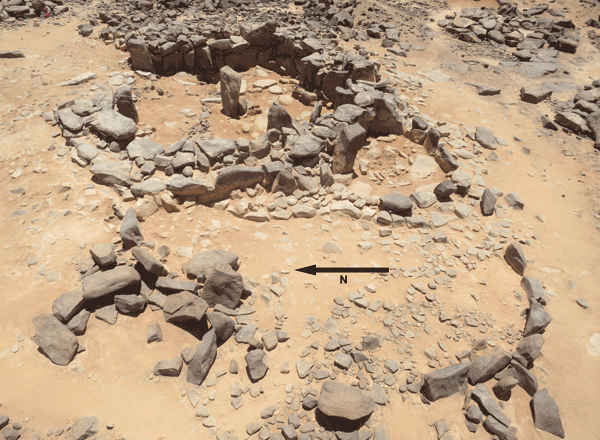According to an American anthropologist, discerning the prehistoric use of standing stones found in Jordan’s Black Desert, located in the eastern region of the country, remains elusive.
Whitman College’s Professor Emeritus of Anthropology, Gary Rollefson, and his team of researchers tried to reconstruct the potential purpose of the stones from the prehistoric period.
In the Black Desert there are at least two types of standing stones: remote stones standing in isolation (Type 1), and a rectangular solid slab (Type 2), the expert said.
“There is no way to date the Type 1 standing stones due to their isolation and lack of attributable artefacts,” he said.

Type 2 standing stones are “clearly Late Neolithic” in age, but were certainly still used throughout the last half of the 7th millennium BC, he added.
The Type 2 stones indicated an association with cultic practices, the expert said.
“The remote examples of Type 1 certainly appear to have no useful purpose,” Rollefson added.
Experts’ first impression of Type 2 stones was that the stones served as central pillars supporting a roof, but that thought was “discarded quickly”, he said.
“The stones were not much higher than one metre in length, and that would mean the inhabitants would have to crawl around under the ceiling; in fact, there is no evidence of any stone or other non-organic material that would have been used to provide protection from the sun or inclement weather of any season,” Rollefson said.
“It is difficult to imagine any practical purpose for Type 2 stones, so cultic purposes are about all that is left,” he elaborated.
Rollefson and his team also studied necropolises in the area, dating graves and analysing artefacts within them. Most tombs have been raided long time ago, he noted, adding that burial customs in the ancient period “remain a puzzle to be solved by archaeologists”.
He noted that there are numerous tombs at the Wisad Pools (around 130 kilometres east of Amman) in the eastern desert, including eight tower tombs and at least the same number of megalithic tombs.
“It is not possible to determine an age for these structures, but Bronze or Iron Age is most likely. The dead were probably politically or tribally significant,” Rollefson said.
--
Sourece: the Jordan Times.



